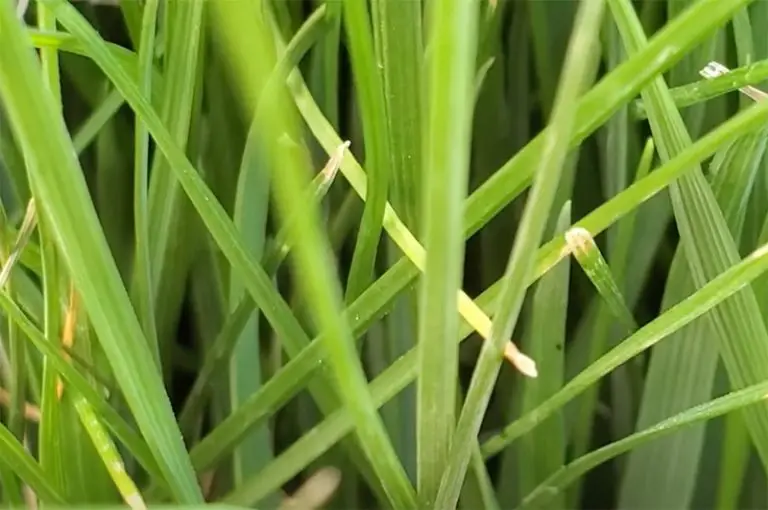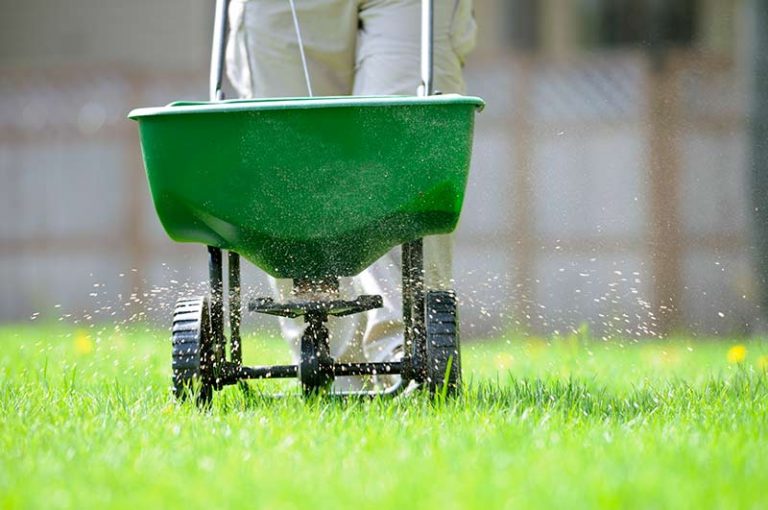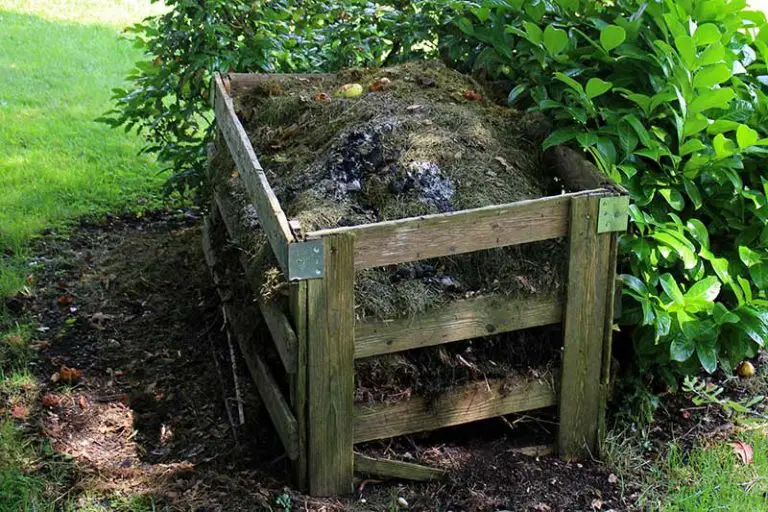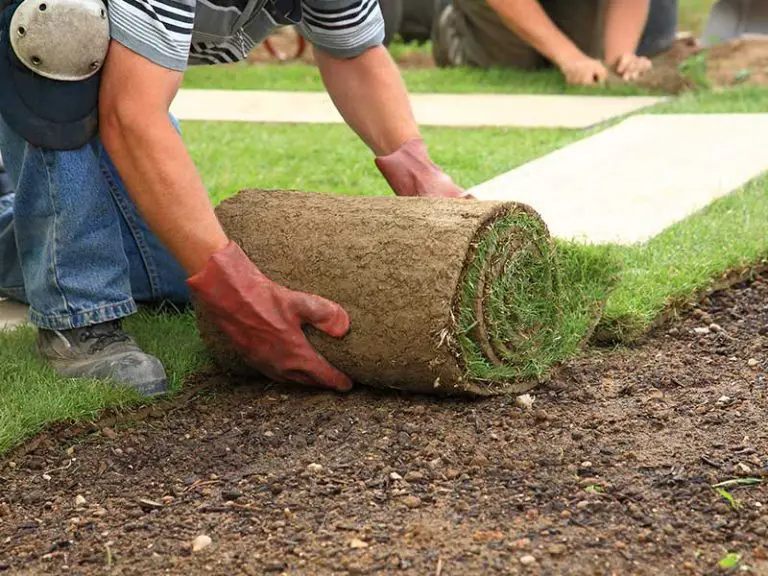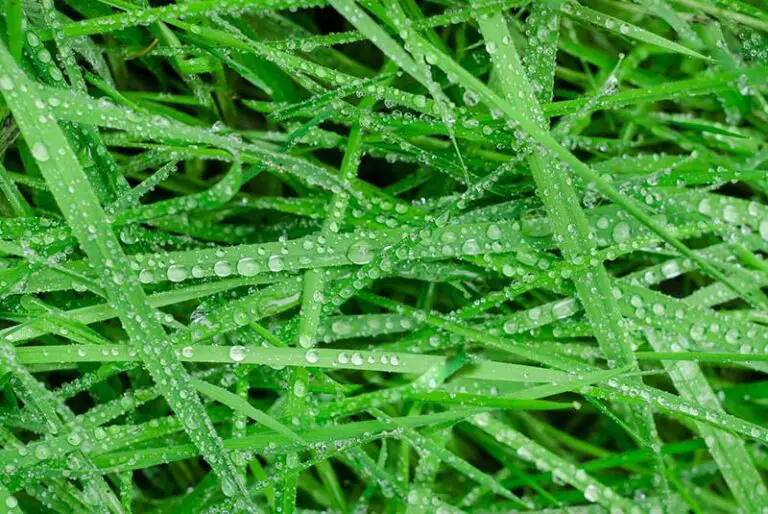Boost Your Soil’s Potassium Levels Easily
Potassium is one of the most important nutrients that plants and grass need in order to thrive. Being involved in many key functions to do with plants’ respiration and phtosythensis, plants will starve if they don’t get enough of this essential nutrient.
There are a few different amendments you can utilize to add potassium to your soil, including banana peel compost, wood ashes, kelp meal, potash, greensand, or granite dust. To increase the availability of potassium to nearby plants, the soil must be well-aerated, and must have the correct temperature, pH, and moisture levels.
What Does Potassium Do For Plants?
Along with nitrogen and phosphorus, potassium is one of the primary nutrients that plants need for normal growth. Also known as potash, it plays a key role in the movement of water, carbohydrates, and other nutrients within plants; potassium is also involved in the activation of enzymes within plants, in turn affecting the production of proteins, starch, and adenosine triphosphate (ATP).
Due to its involvement in the production of ATP, potassium is therefore responsible for regulating the rate of photosynthesis in plants. On top of this, potassium is essential to regulate the activity of the plants’ stomata; these are small openings in the plants’ foliage that allow the exchange of oxygen, carbon dioxide, and water vapor. Without sufficient potassium, plants are unable to open and close their stomata properly, which essentially suffocates them.
Sufficient levels of potassium provide the following benefits for plants:
- Encourages the growth of strong, extensive root systems
- Improves water usage and drought tolerance
- Maintains turgor and prevents wilting due to water loss
- Helps photosynthesis and plants’ food formation
- Regulates respiration, improving energy efficiency
- Helps the movement of carbohydrates and starch
- Increases the protein content within plants
- Helps plants to build cellulose
- Reduces the risk of diseases like fungal infestations
- Improves resistance to pest infestations
- Encourages the growth of strong, extensive root systems
- Improves water usage and drought tolerance
- Maintains turgor and prevents wilting due to water loss
- Helps photosynthesis and plants’ food formation
- Regulates respiration, improving energy efficiency
- Helps the movement of carbohydrates and starch
- Increases the protein content within plants
- Helps plants to build cellulose
- Reduces the risk of diseases like fungal infestations
- Improves resistance to pest infestations
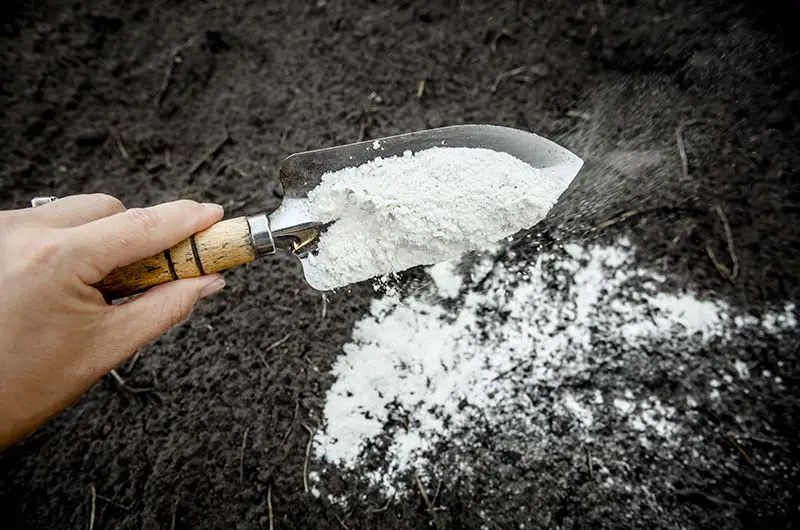
What Are the Signs of a Potassium Deficiency in Plants?
It can often be difficult to determine whether your lawn or garden is suffering from a potassium deficiency as the symptoms aren’t always visually apparent. For example, in a lawn, a potassium deficiency may cause stunted grass growth or yellowing grass blades. In plants, this discoloration may be accompanied by a reduction in flowering or fruit abundance. Aside from a potassium deficiency, there are several other reasons why your plants may be suffering these symptoms.
With that said, there are some telltale signs of a potassium deficiency in plants or grass, including:
- Plant leaves or grass having ‘burned’ brown edges
- Plants or grass suffering from chlorosis, a condition that causes plant tissue to turn yellow
- Purple spots developing on the underside of plant leaves
In severe cases where the potassium deficiency is untreated, symptoms may worsen to:
- Leaf necrosis, i.e. the death of the plant tissue
- Generally slow or stunted growth of grass and plants
- Higher incidences of disease, fungal infestations, or pest damage
- Lower yields in fruit or vegetable crops
- Fewer flowers in flowering plants
What Affects Potassium Uptake in Soil?
Even if there are sufficient levels of potassium in your soil, your plants may still suffer from a deficiency in the nutrient. Certain conditions in the soil can affect the availability of potassium, reducing its availability to nearby plants. This will cause a potassium deficiency in your plants regardless of how much potassium is actually present in the soil.
Soil Composition
The most common cause of a potassium deficiency when enough potassium is present lies in the composition of the soil. For instance, plants growing in sandy soils are more likely to suffer from deficiencies in nutrients such as potassium; the light, well-draining texture of these soils allows water to move more freely, increasing the likelihood of potassium runoff or leeching. Clay-heavy soils, on the other hand, hold onto nutrients much more effectively and are therefore less susceptible to causing a potassium deficiency in plants nearby.
Soil pH
Soil pH is another factor that affects nutrient availability such as that of potassium. In general, most plants thrive in soils with a pH between 6.5 and 7.0. When the soil pH falls outside of this range, plants are less able to take up nutrients effectively. There is a direct correlation between having a low soil pH and a lower availability of potassium to nearby plants. Testing your soil is the easiest way to determine its nutrient and pH levels.
Soil’s Moisture Content
Without enough moisture, plants are unable to take up potassium as effectively. In general, soils with a higher moisture content have more available potassium to plants than those without. By increasing the moisture content in the soil, you increase the amount of potassium plant roots are able to absorb.
Aeration of Soil
Plants will also struggle to take up potassium from soils that have poor aeration. When soil becomes compacted, it lacks the spaces necessary for the circulation of air around the turf and plant roots. This deprives the soil and plant roots of oxygen, in turn stunting the plants’ process of respiration. The presence of oxygen is also crucial for the uptake of potassium; therefore, without oxygen, plants are unable to take in this nutrient. Improving the aeration of your soil will improve the availability of potassium to your plants.
Temperature of Soil
Soil temperature has an effect on pretty much every function that plants carry out, from their root activity to their general physiological processes. If your soil temperature is too high or too low, this limits the physiological processes your plant carries out; in turn, this reduces the availability of potassium in the soil. Optimal soil temperatures for potassium uptake are between 60 and 80 degrees Fahrenheit.
Tillage System in Soil
The type of tillage system you have in your growing spaces will also affect potassium availability. Research shows that no-till and ridge-till planting systems result in a lower availability of potassium in the soil; this is likely due to the restriction in root growth and root distribution that results from these types of tillage systems.
Amendments that Add Potassium to Soil Naturally
There are a number of organic substances that you can add to your soil to fix a potassium deficiency naturally. We have explained each of these options in more detail below.
Compost
Compost is an excellent all-round amendment you can add to your soil to improve its nutrient content, including that of potassium. As it is made entirely of organic matter, compost acts as a slow-release organic fertilizer, releasing its nutrients gradually over time as it decomposes.
To fix a potassium deficiency, it would be best to use a compost that contains banana peels and other types of fruits and vegetables as these materials are particularly high in the nutrient. Take note that the potassium compounds in compost are water-soluble; this means they’re in the most readily available format for plants to take up, however, they’re susceptible to leeching from your compost pile over time.
Wood Ashes
Wood ashes, specifically hardwood ashes, are a rich and natural source of potassium. To use wood ashes as a fertilizer, you can add them directly to the soil. The typical rate of application is to add about a 5-gallon bucket of ashes per 1000 square feet of soil. For a more gentle method, you can add wood ashes to your compost pile to increase the composts’ potassium content.
Take note that wood ashes are alkaline and will likely raise the pH of the soil you add them to. Test your soil pH regularly if you choose this substance to ensure it remains in the optimal pH range. Also, avoid using wood ash around plants with a specific requirement for acidic soil, such as azaleas and blueberries.
Kelp Meal
Kelp meal and seaweed are rich sources of potassium, working quickly to release their nutrients. These substances are available in a dried or liquid form, with the latter being the quickest to work. Either mix several handfuls of dried kelp meal into the soil or spray the soil with a liquid seaweed spray. If using dried kelp meal, apply it at a rate of about 1 pound per square foot of soil.
Greensand
Greensand is a substance mined from ancient seabeds. In addition to potassium, greensand is rich in a number of other beneficial nutrients. It is a more slow-release form of potassium, better suited for a long-term supply of the nutrient rather than a quick fix. Greensand also acts as an effective soil conditioner and will improve its water retention properties.
You can either apply greensand directly to your soil or mix it into your compost. If applying directly to the soil, add about 5 pounds of greensand per 100 square feet of soil. If adding it via your compost, simply throw the greensand onto your compost pile.
Muriate of Potash (Potassium Chloride)
Like greensand, muriate of potash is another substance mined from ancient mineral deposits. This is an effective and natural source of potassium and is relatively cheaper compared to sulfate of potash. However, it contains chlorine which may harm and reduce the population of helpful microbes in the soil.
Sulfate of Potash (Potassium Sulfate)
Sulfate of potash is a similar mineral substance to that previously mentioned. Although it’s relatively more expensive than muriate of potash, sulfate of potash is safer for your soil as it doesn’t contain chlorine. With these substances, it’s crucial to read the application instructions carefully for your specific product. Also, not all potash products are automatically organic; if this is important to you, check with the Organic Minerals Review Institute to ensure your chosen product is certified organic.
Sul-Po-Mag (Sulfate of Potash-Magnesia)
Sul-Po-Mag is another variation of potash that comes from langbeinite, a naturally-occurring mineral. As well as potassium, Sul-Po-Mag also contains sulfur and magnesium, so you should only use this amendment if your soil also needs a boost of these nutrients. This is a water-soluble and fast-acting amendment.
Granite Dust
Granite dust is a relatively inexpensive amendment that can add potassium and other trace minerals to your soil. This substance is available to purchase from granite quarries. As it is made from ground-up granite rocks, granite dust is an extremely slow-release amendment and will take a long time to release its potassium into your soil.
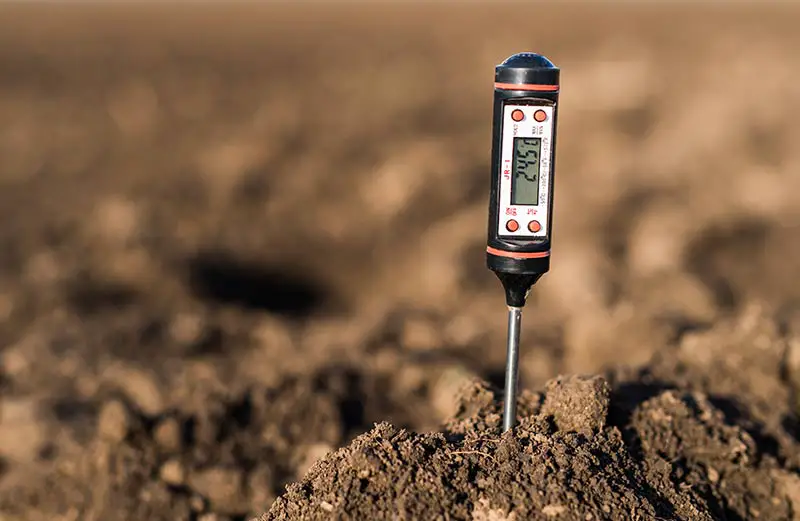
How to Add Potassium to Soil (Step-by-Step)
Follow this step-by-step method to add your potassium-rich amendments of choice to your soil.
1. Test Soil
Before attempting to amend your soil, it’s always best practice to test it to determine its pH and nutrient levels. You can do this using one of two methods; either send a sample to a lab for professional testing or test your soil yourself using an at-home kit.
Professional testing will provide you with more accurate information about the pH level of your soil, as well as the nutrients it currently contains. All you need to do is take a sample of your soil and send it to a private laboratory or your local extension office; this is a service that most extension offices offer for free or for a very low fee.
You can alternatively use an at-home testing kit to provide you with some basic information about your soil. These kits are easy-to-use and will generate instant results for you to get an understanding of your soil’s pH and nutrient content.
2. Prepare Soil for Amendment
The next step is to prepare your soil for the addition of your amendments. First, clear the area of weeds and any other unwanted vegetation. This is also a good time to aerate your soil; as we’ve explained, compact soil can reduce the availability of nutrients like potassium to the nearby plants. Use a core aerator or gardening fork to break up compaction in the planting area, then use a rake to rake the bed smooth.
3. Adjust Soil pH if Necessary
If your soil test results reveal your pH is incorrect, add your pH adjusting material at this stage. The optimal pH level for most plants and grasses is something between 6.5 and 7.0. If your pH level is below 6.5, add a material like agricultural lime to increase it. If it’s above 7.0, instead add a material to reduce it, such as sulfur. This will improve the health of your plants in addition to increasing the availability of potassium and other nutrients in the soil.
4. Add Potassium-Rich Amendment
Next, you can add your potassium-rich amendment of choice. Refer to the information in the previous section for guidance on the best material to use for your specific needs. Using a rototiller or spade, work your amendment/s of choice into the top 8 to 12 inches of soil.
5. Water Soil
After working your amendments into the soil, give the whole area a good watering. This will encourage your chosen substance to begin releasing its nutrients straight away.


